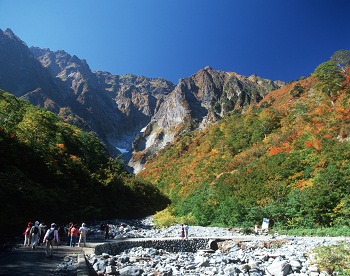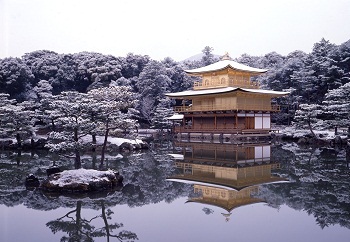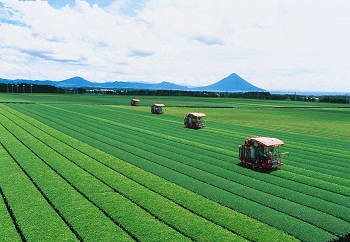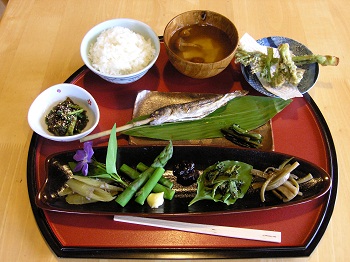Last month it was announced that the number of visitors to Japan hit 10 million for 2013 – the first time this has happened in one year. UK visitors to Japan were up 10.3% for January to November year-on-year, and overall Japan saw an increase of 24% compared with the same period the previous year.
The Japanese Government aims to double the number of international visitors to Japan to 20 million by 2020. To help us explore the charms of Japan and its growing popularity as a holiday destination for people from all over the world, we spoke to Martin Barrow, who was appointed by the Japanese Ministry of Land, Infrastructure, Transport and Tourism as Visit Japan Ambassador in 2008.
|
How did you first become interested in Japan and when did you first visit the country?
After I left school I planned a short trip and period of work as a gap year, but once I started travelling, the travel-bug got me and I kept going. I spent many months travelling through Asia by land, all the way from Europe to South-East Asia, with Japan being a target destination. I worked in various places along the way and eventually went from Vietnam to Japan by ship in April 1964 (coming up for 50 years ago now).
|
I had no preconceptions about Japan and no particular links there, but once I arrived it was just fantastic and my friends and I loved it. We spent six or seven weeks travelling all over Japan, starting in Kobe, travelling down through Kyushu and then eventually up to Hokkaido, where we left on a ship from Muroran to Canada and eventually arrived back home. The whole trip lasted about two years, but my six weeks or so in Japan was one of the highlights of my travels.
Having been in Asia for a long time, I was determined to get back and work there as soon as I could. Luckily, later I was able to spend a total of eight years in Japan, two years in the '60s and six years in the '70s. There I was very much involved with UK-Japan relations and was appointed as the President of the British Chamber of Commerce at a young age. |
 Mount Tanigawa, Gunma Prefecture (photograph courtesy of JNTO)
Mount Tanigawa, Gunma Prefecture (photograph courtesy of JNTO)
|
What particularly strong memories of Japan do you hold?
On my first visit I think Kyushu stands out as the most memorable - a great contrast of nature and tradition, alongside the welcoming and hospitable spirit of the people.
As I mentioned, I had no previous concept of Japan but immediately I could sense the kindness of people all over Japan. In those days I didn't speak a word of Japanese but people were very helpful, long before tourism was an industry of any sort in Japan. I remember one experience when we were camping near a village. A lady came and brought some eggs for us to cook and we wondered what to give her back. We had brought some small tins of coffee so we gave her one. She then went back home and brought us more eggs – she had to be on top! It is a simple example of the “Omotenashi” - the spirit and hospitality of Japan - which of course has carried on until now.
Other than Kyushu, later I got to love lots of other parts of Japan - my wife is from Yamanashi - but in particular I have good memories of Gunma Prefecture. We learnt to ski in Gunma in the 1970s and it became a great favourite, along with Niigata further north. Recently I have had several visits to Tohoku since the Great East Japan Earthquake. Last year I was in Mashiko, one of the great pottery centres of Japan, just south of Tohoku.
However, right at the top of the list of wonderful places I would say is Kyoto. I must have visited there more than 50 times, but every time there is a new temple to go to or something new to see!
A point that very few people realise is that Japan is 86% countryside – not city. One's image of Japan is of great traditions and beautiful temples, but the country aspect is often understated although so prominent. For example, hiking or skiing across the mountains is wonderful. I must make one confession, though – I haven’t been to the top of Mount Fuji yet!
The contrast of tradition, nature, modernity - all the different aspects of Japan along with the excitement and hospitality fit in so well together.
|
 Kyoto in winter (photograph courtesy of JNTO)
Kyoto in winter (photograph courtesy of JNTO) |
 Kagoshima tea plantation (photograph courtesy of JNTO)
Kagoshima tea plantation (photograph courtesy of JNTO) |
Have you noticed any differences in tourism in Japan over time?
The biggest change in a simple way is the idea of "Cool Japan - Fusion with Tradition". For example, for people who know Japan eating sushi would be considered traditional, but for the youth of the world it’s ‘cool’. Cool is not just manga and anime, it’s what people think it is – you don’t need to over-define it. Some key aspects of ‘Cool Japan’ would be the world’s busiest crossroads at Shibuya and the gadget centre of the world – Akihabara. I always tell British visitors to see these places.
Regarding attitudes to tourism, visitors were small in number in the past and tourism was a domestic business, whereas now it has become an international one. However, regardless of that fact, people are as warm and open as they were to me 50 years ago, but now have a greater understanding of the value of the visitor and are very welcoming.
I have yet to meet anyone who has been disappointed with a trip to Japan, whether they are British, American, European or Asian. Indeed, last year the number of visitors reached over 10 million – the highest number ever to visit Japan in one year.
|
How did you come to be involved with the Visit Japan Campaign?
I have always had a deep interest in travel and tourism, partly due to my own travel experiences in the '60s.
|
Later, I served as Chairman of the Hong Kong Tourism Board from ‘88 to ‘96, so became heavily involved in travel and tourism then. When I came back to the UK in 2001, I developed strong links with the Japanese Embassy and the Japan National Tourism Organisation (JNTO). When the Japanese Government set up the Visit Japan Ambassador scheme in 2008, I was the only British person appointed in that category. There are about 50 tourism ambassadors, mainly Japanese, but some non-Japanese too across the world. We are an informal advisory board of enthusiasts. I work very closely with JNTO and the Embassy here, giving presentations, talks and speeches. For example, I gave a speech recently at the Kyushu tourism seminar in London and did likewise at the Embassy seven months to the day after the Great East Japan Earthquake. I also speak at world travel conventions, tourism councils and various other bodies.
|
|
I’m particularly keen that the UK and Japan collaborate on the Olympic Games in 2020 as we have a lot of experience after London 2012. It was a great success, but of course there were also lots of challenges. We want Japan to learn from the good points but also want to show how things could be done better - a lot of British expertise could be shared!
What about Japan do you think is particularly appealing to the British visitor?
|
 Japanese set meal (photograph courtesy of JNTO)
Japanese set meal (photograph courtesy of JNTO)
|
Not necessarily just for the British visitor – but the theme of ‘endless discovery’ and the combination of the warm hospitality, the wonderful traditions in culture ranging from the temples to hot springs, the ‘Cool Japan’ of popular culture, the beautiful nature – mountains, islands and beaches. Along with this I would add ‘good value’. For example, a subway ticket in Tokyo is less than a third of the price of one in London, and restaurants serving set meals (teishoku) at a bargain price of no more than £6 or £7 can be found almost anywhere across the country.
Clean and cheap hotels with WiFi can be found in every city, often for less than £50 a night, and with competitive airfares from the UK and flight times no different than if travelling to Bankgok, Hong Kong or Bali, Japan is much closer and more affordable than people may think.
|
What places would you recommend to people considering travelling to Japan in 2014?
My list is very long and it all depends on peoples’ tastes, but of course Kyoto and Tokyo are on everyone’s list. Spending two or three days in Tokyo would hopefully include Shibuya and Akihabara, and lovely towns nearby such as Kamakura. I would also include something very different, for example a visit to Hiraizumi in the Tohoku region, which was recently awarded World Heritage status. I’ve only been there once but it is staggeringly beautiful. Tohoku itself is a wonderful area to visit. The part affected by the Great East Japan earthquake was a narrow area on the coast but 90% of Tohoku was not affected at all.
In conclusion, with Japan winning many awards for tourism, I would hope many more British will visit there and I promise you will not be disappointed. The enthusiastic and professional team at the Japan National Tourism Organisation in London can give you lots of advice. Visit their website for more information here. |
|

